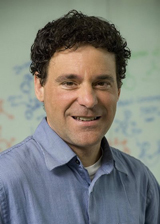 Prof. Patrick S. Stayton, Editorial Board member
Prof. Patrick S. Stayton, Editorial Board member
Patrick Stayton currently serves as the Washington Research Foundation Professor in the Department of Bioengineering at the University of Washington. He is the founding Director of the Institute for Molecular Engineering and Sciences, and the Center for Intracellular Delivery of Biologics. He received his B.S. in Biology (summa cum laude) from Illinois State University in 1984, his Ph.D. in Biochemistry from the University of Illinois in 1989, and was a Postdoctoral Research Associate at the Beckman Institute for Advanced Science and Technology, also at the University of Illinois.
Dr. Stayton’s eclectic research group works at the interface of fundamental molecular science and applied molecular bioengineering. His laboratory has fundamental projects aimed at elucidating the basic principles underlying biomolecular recognition, and connected projects applying these principles to medical applications in the drug delivery, medical diagnostics, and regenerative medicine fields. He has published over 200 scientific papers. Dr. Stayton has a strong interest in translating the group’s research, has been awarded several patents, and is a co-founder of the startup companies PhaseRx Inc. based on his group’s biologic drug delivery work, and Nexgenia based on their diagnostic work.
Dr. Stayton has been elected as a Fellow of the American Institute for Medical and Biological Engineering, and has been the recipient of the Clemson Award from the Society For Biomaterials and the CRS-Cygnus Recognition Award from the Controlled Release Society. He served as Co-Chair of the Gordon Conference on Drug Carriers in Medicine and Biology in 2010. He has also been awarded the 2009 Faculty Research Innovation Award, UW College of Engineering, and the Distinguished Teacher and Mentor Award from the Department of Bioengineering.
Biomaterials Science is now accepting submissions. All articles will be free to access until the end of 2014. Please contact the editorial office if you have any questions about the journal.
Follow the latest journal news on Twitter @BioMaterSci or go to our Facebook page.
To keep up-to-date with all the latest research, sign-up to our RSS feed or Table of contents alert.














